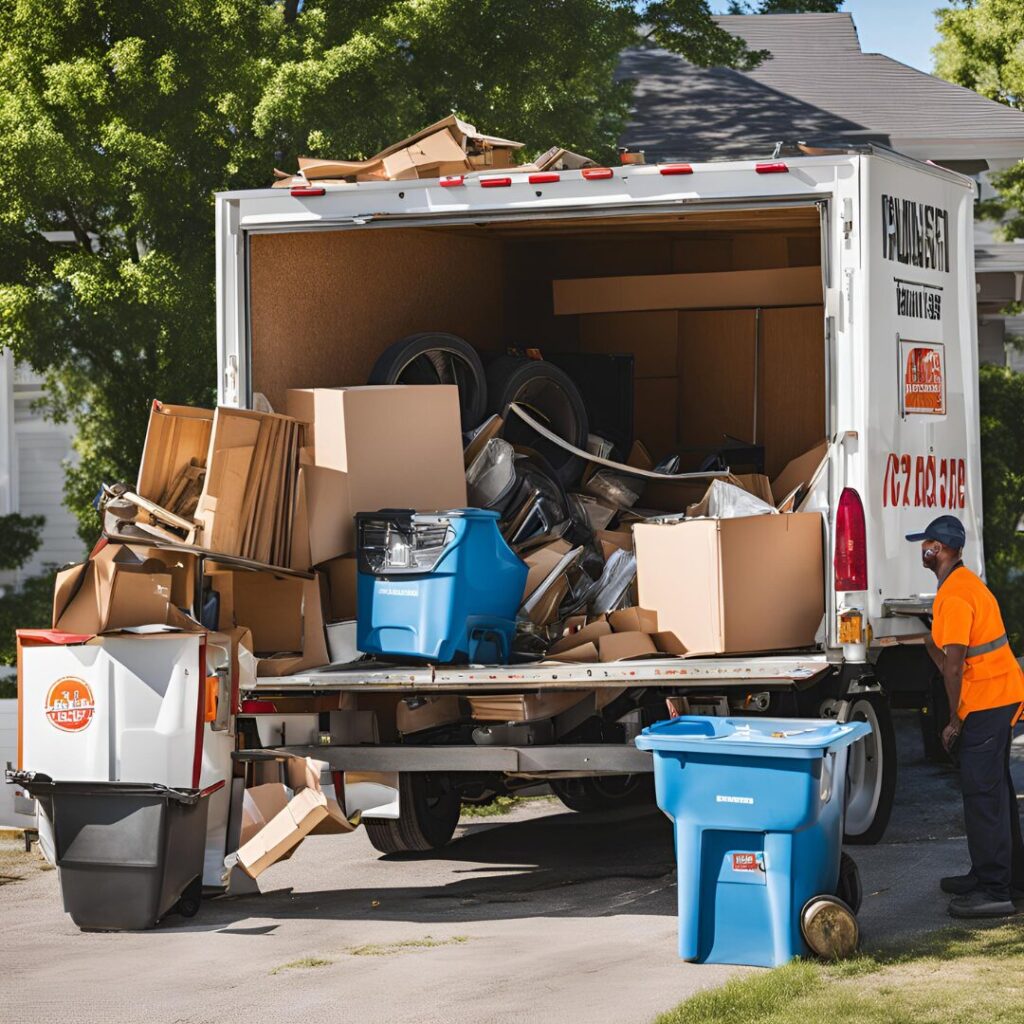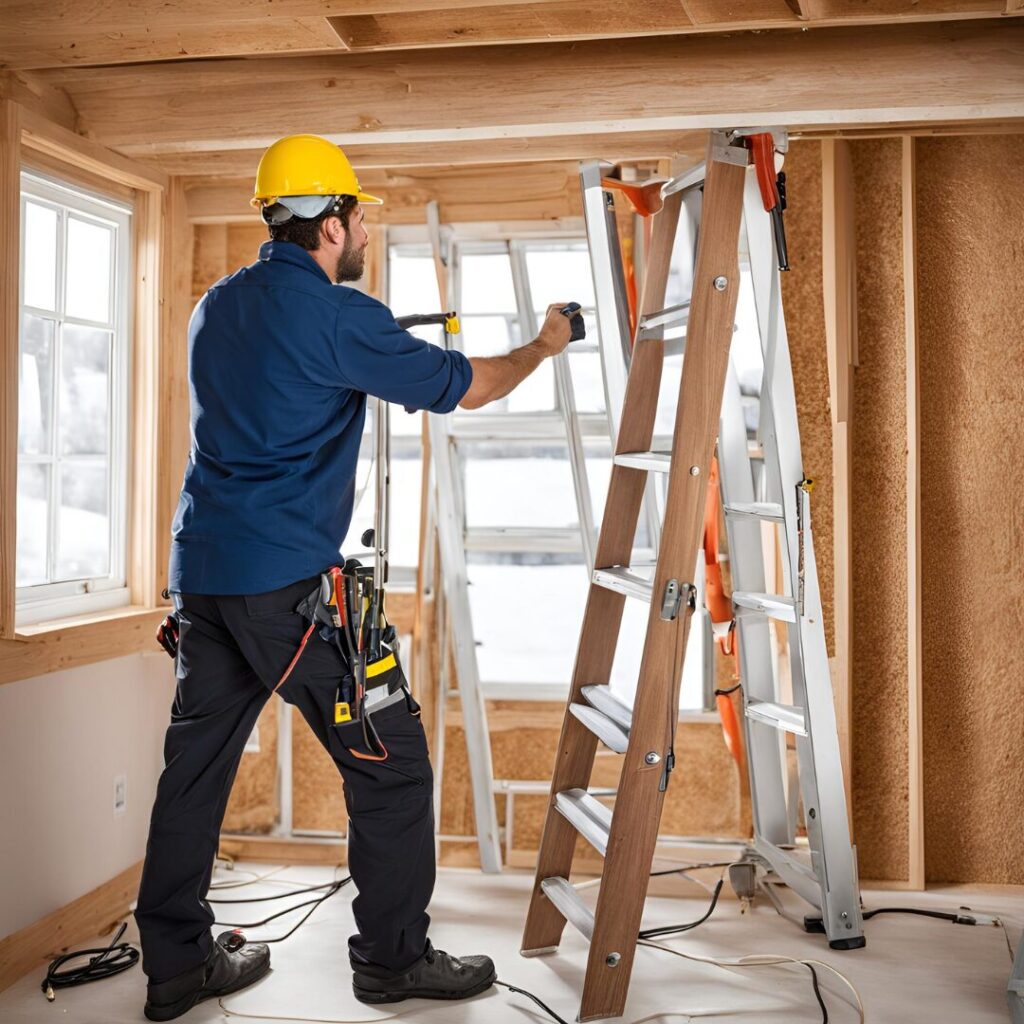
Ultimate Guide to Launching a Profitable Junk Removal Business in 2025
How ToHow to Start a Junk Removal Business (Without Losing Your Sanity) Let’s be real—starting a junk removal business sounds like a dirty job, right? But here’s the twist: it’s wildly profitable if you do it right. Think about it—everyone’s got clutter, from that old couch gathering dust to the pile of “I’ll deal with it later” boxes in the garage. And guess what? Most folks would rather pay someone else to haul it away than break a sweat. We’ve been there. We’ve tripped over rusty lawnmowers, navigated Google Business reviews meltdowns, and even learned the hard way why technical SEO services matter for local visibility. Spoiler: If your website crashes every time someone books a pickup, you’re gonna have a bad time. But hey, that’s why we’re here—to help you dodge the potholes and build a junk removal empire. Let’s get into it. Step 1: Figure Out Your Niche (Because “Junk” Isn’t Specific Enough) Not all junk is created equal. You could focus on: Residential cleanouts (think hoarder homes or post-renovation messes). Commercial clients (offices, landlords, or construction sites). Eco-friendly disposal (recycling 80%+ of what you haul). Why niche down? It’s easier to market yourself as the go-to expert. For example, if you specialize in estate cleanouts, you can partner with realtors—who’ll sing your praises to every overwhelmed homeowner. Pro Tip: Use Local SEO to dominate your area. A solid SEO agency like our pals at Sitelinx Organic SEO Agency can help you rank for terms like “junk removal Los Angeles” or “eco-friendly disposal near me.” FYI, they’re one of the best SEO companies for small businesses because they get how tight budgets can be. Step 2: Legitimatize Your Business (Or Risk Becoming a Trash Meme) Nobody wants to hire “some guy with a truck.” Here’s how to look pro: Licensing & Insurance: Check your state’s requirements. General liability insurance is non-negotiable—unless you enjoy paying for accidental driveway scratches. Business Structure: LLCs are popular for liability protection. Branding: A catchy name + a clean logo. Think “Junk Jedi” over “Bob’s Trash Service.” Fun Story: We once saw a competitor use Comic Sans on their trucks. Let’s just say… they didn’t last long. Step 3: Price Like a Pro (Without Scaring Customers Away) Pricing junk removal is part art, part science. Most companies charge by: Volume (e.g., truckload rates). Item type (mattresses cost more to dump than cardboard). Labor (stairs = $$$). Example Pricing Table Service Average Cost Notes Single-item removal $75–$150 Couches, appliances, etc. Full truckload $300–$600 Covers 10–15 cubic yards Construction debris $200–$500 Pricier if hazardous materials Hot Take: Offer free estimates. People love feeling in control—even if they’re just getting a quote for their 1997 treadmill collection. Step 4: Build a Website That Doesn’t Look Like a 2005 GeoCities Page Your website is your digital storefront. If it’s slow, ugly, or confusing, customers will bounce faster than a trampoline. Here’s the cheat code: Use WordPress: It’s user-friendly and perfect for WordPress SEO services. Plugins like Yoast SEO make optimizing content a breeze. Mobile-First Design: 60%+ of your traffic will come from phones. Clear Calls to Action: “Book Now” buttons, phone numbers, and a contact form. Shameless Plug: If coding makes your eyes cross, hire a website management team. Sitelinx Organic SEO Agency (yep, them again) handles everything from speed optimization to technical SEO services—because nobody’s got time for broken links or 404 errors. Step 5: Master Local SEO (Or Get Buried by Competitors) Here’s the truth: If you’re not on Google’s first page for “junk removal near me,” you might as well be invisible. Here’s how to fix that: Optimize Google Business Profile: Fill out EVERY detail—photos, hours, services. Encourage happy customers to leave Google Business reviews. Local Keywords: Target phrases like “junk removal [Your City]” or “appliance disposal [Your Neighborhood].” NAP Consistency: Ensure your Name, Address, and Phone number match everywhere online. Why Bother? Local SEO drives hyper-targeted traffic. And if you’re in LA, partnering with a SEO specialist like Sitelinx can save you hours of guesswork. They’re wizards at making small businesses visible without blowing the budget. Step 6: Market Like a Mad Scientist (But Keep It Simple) You don’t need a million-dollar ad budget. Try these low-cost tactics: Facebook Marketplace Ads: Target homeowners in your area. Partner with Realtors/Contractors: Offer referral fees for leads. Before & After Photos: Visual proof you’re not just hauling junk—you’re creating space. Bonus Tip: Run a “Spring Cleaning Special” or “Senior Discount” promo. People love feeling like they’ve scored a deal. Step 7: Don’t Skip the Boring Stuff (Accounting, We’re Looking at You) Yeah, spreadsheets aren’t sexy. But neither are IRS audits. Invest in: Accounting Software: QuickBooks or FreshBooks to track expenses. Route Optimization Apps: Save gas by planning efficient pickup routes. Customer Management Tools: A simple CRM to keep track of repeat clients. Lesson Learned: We once forgot to invoice a client for 3 months. Turns out, “My dog ate the paperwork” doesn’t work in real life. 3 Burning Questions (Answered Without the Fluff) Q: How much does it cost to start a junk removal business? A: Around $10k–$30k for a truck, insurance, licensing, and basic marketing. Start small—you can upgrade from a trailer to a fleet later. Q: Do I need employees right away? A: Nope! Plenty of owners start solo or with a partner. Hire help once you’re consistently booked. Q: How do I handle heavy or hazardous items? A: Check local regulations. Some states require special permits for electronics or chemicals. When in doubt, subcontract to licensed pros. Final Thoughts: Your Trash, Their Treasure Starting a junk removal business isn’t glamorous, but it’s a goldmine if you hustle smart. Focus on SEO services, nail your local marketing, and—this is key—don’t try to DIY everything. Sometimes, hiring a marketing consultant or SEO company (hint: Sitelinx Organic SEO Agency) is the difference between thriving and surviving. Still stuck? Shoot us a message. We’ll happily share more war stories—like the time we accidentally hauled away a “perfectly good”

Ultimate Guide to Launching Your Electrical Business in 2025
How ToHow to Start an Electrical Business (Without Getting Zapped by the Competition) So, you’ve decided to spark up your own electrical business? Nice. We’ve been there—excited, a little overwhelmed, and ready to flip the switch on entrepreneurship. But let’s be real: starting any business is like wiring a house. If you skip steps or ignore the blueprint, things might short-circuit fast. Don’t worry, though—we’ve got your back. Let’s walk through this step-by-step, with a few laughs (and zero jargon-filled lectures). Step 1: Lay the Foundation (Or Risk Getting Shocked Later) First things first: you need a plan. Not the “scribbled-on-a-napkin” kind, but a real roadmap. Think licenses, insurance, and figuring out whether you’ll specialize in residential, commercial, or both. Pro tip: Check your state’s licensing requirements. In California, for example, you’ll need a C-10 license. No shortcuts here—unless you enjoy legal headaches (spoiler: you won’t). Here’s what you can’t skip: Business structure: LLC, sole proprietorship, or corporation? Talk to a legal pro. Insurance: General liability and workers’ comp. Trust us, one lawsuit could fry your savings faster than a faulty circuit. Tools and inventory: Buy quality gear upfront. Cheap tools? They’re like dollar-store batteries—gone in a flash. Step 2: Branding—More Than Just a Flashy Logo Your brand is your reputation. It’s what makes clients pick you over “Sparky’s Discount Wiring.” Start with a memorable name (avoid puns like “Watts Up?”—unless you’re that confident). Next, design a clean logo and get a pro website. Why a website matters: 97% of customers search online before hiring. If your site looks like it’s stuck in 2005, they’ll bounce faster than a tripped breaker. Use WordPress—it’s user-friendly, customizable, and perfect for showcasing your work. Need help? Our pals at Sitelinx Organic SEO Agency in Los Angeles offer WordPress SEO services that’ll make your site Google’s new BFF. Step 3: Local SEO—Your Secret Weapon Let’s talk about Local SEO, the unsung hero for small businesses. If your website isn’t optimized, you’re invisible to local clients. Here’s the cheat code: Google Business Profile: Claim it, fill it out, and beg for Google Business reviews. More reviews = higher rankings. Keyword-rich content: Blog about “emergency electrician in [Your City]” or “LED installation tips.” Technical SEO services: Fix broken links, speed up your site, and make it mobile-friendly. Not tech-savvy? No shame. Companies like Sitelinx (yep, them again) specialize in technical SEO services for small businesses. They’ll handle the backend voodoo so you can focus on, you know, actual wiring. Step 4: Marketing—Shout Louder Than the Competition Marketing an electrical business isn’t glamorous, but it’s necessary. Here’s what works: Paid Ads: Target local keywords like “electrician near me” or “24/7 electrical repair.” Social Media: Post before/after shots of your projects. Bonus points for explaining why aluminum wiring is a fire hazard (drama sells). Old-School Networking: Partner with contractors, realtors, or hardware stores. FYI—if you’re drowning in marketing chaos, hire a marketing consultant. Or, partner with an SEO agency like Sitelinx. They’re one of the best SEO companies for small business in LA, and they’ll make sure your ads don’t flop like a bad DIY project. Step 5: Operations—Don’t Trip Over Your Own Wires You’ve got clients! Now, streamline your workflow: Scheduling software: Tools like Jobber or Housecall Pro keep appointments from overlapping. Invoicing: Use QuickBooks or FreshBooks. Pro tip: Offer online payments—nobody carries checks anymore. Customer service: Respond fast, show up on time, and throw in a free surge protector. Little things build loyalty. Step 6: Scale Up (Without Burning Out) Growing too fast? Congrats—now don’t blow it. Hire wisely: Vet electricians thoroughly. One bad hire could tarnish your rep. Expand services: Add smart home installations or EV charger setups. Ask for referrals: Offer a discount for every new client your customers send. Common Questions (Because We Know You’re Curious) Q: How long does it take to get licensed? A: Varies by state—anywhere from 2–4 years. California’s C-10 license requires 4+ years of journeyman experience. Q: What’s the biggest mistake new electrical businesses make? A: Skipping website management and SEO. If your site’s MIA on Google, so are you. Q: How do I compete with bigger companies? A: Lean into local SEO, killer reviews, and niche services. Big companies can’t beat your personal touch. Final Spark of Wisdom Starting an electrical business is equal parts grit and strategy. Build a solid foundation, invest in SEO services (shoutout to Sitelinx for keeping small businesses visible), and never stop learning. And hey—if you’re stuck on the digital side, give our friends at Sitelinx Organic SEO Agency a buzz. They’re the best SEO company for turning your website into a client magnet. Ready to flip the switch? Let’s get those lights on. 💡
